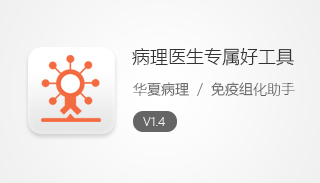导读:美国耶鲁大学科学家5日宣布,他们新完成的研究详细地揭示了人体胚胎干细胞中的3种基因是如何控制人体发育的,该成果有望帮助人们深入了解如何培育这些细胞用于疾病治疗。

研究人员在新出版的《细胞·干细胞》杂志上发表文章称,人体胚胎干细胞对人体的作用不同于实验鼠胚胎干细胞对鼠体的作用,这凸显了利用人体胚胎干细胞开展研究工作的重要性。文章资深作者、耶鲁大学干细胞中心遗传学助理教授娜塔莉亚·伊万诺娃说,从实验鼠的情况难以推断出胚胎干细胞在人体中的作用,人类的身体以不同的方式组织自己。
胚胎干细胞在受精后不久便形成,由于每个干细胞能转变成身体中的任何种类的细胞,因此它们十分独特。随着人体发育,细胞开始定性发展,失去了变成其他细胞类型的能力,当然,某些新干细胞的再生除外。科学家希望能够了解干细胞自我再生和分化的过程,以便治疗那些与细胞受损相关的疾病,如帕金森病、脊椎受伤、心脏病和阿尔茨海默症。
科学家通过研究确认的3种控制胚胎早期发育的基因分别是Nanog、Oct 4和Sox 2,它们是维持干细胞自我再生和防止其过早分化成非正常细胞的关键。由于目前使用人体胚胎干细胞受到政府规定的限制,因而许多有关胚胎干细胞如何工作的研究只能在实验鼠身上进行。
新的研究显示,从根本上讲,人类胚胎干细胞在人体中作用不同于实验鼠干细胞在鼠体上的作用。例如,在人体内,Nanog基因与Oct 4基因成对后控制名为外胚层神经细胞的分化,该细胞世系(lineage)能导致神经元和其他中枢神经系统细胞的产生。与之相反,Sox 2细胞与其他基因合作,在外胚层、中胚层和内胚层所有早期细胞世系的控制和新干细胞的产生中发挥着至关重要的作用。干细胞自我再生涉及多个类型的癌症。
伊万诺娃强调,许多其他的基因一定参与了人体早期发育变化的控制,她的实验室正在试图寻求该问题的答案。


Distinct Lineage Specification Roles for NANOG, OCT4, and SOX2 in Human Embryonic Stem Cells
Zheng Wang, Efrat Oron, Brynna Nelson, Spiro Razis, Natalia Ivanova
Nanog, Oct4, and Sox2 are the core regulators of mouse (m)ESC pluripotency. Although their basic importance in human (h)ESCs has been demonstrated, the mechanistic functions are not well defined. Here, we identify general and cell-line-specific requirements for NANOG, OCT4, and SOX2 in hESCs. We show that OCT4 regulates, and interacts with, the BMP4 pathway to specify four developmental fates. High levels of OCT4 enable self-renewal in the absence of BMP4 but specify mesendoderm in the presence of BMP4. Low levels of OCT4 induce embryonic ectoderm differentiation in the absence of BMP4 but specify extraembryonic lineages in the presence of BMP4. NANOG represses embryonic ectoderm differentiation but has little effect on other lineages, whereas SOX2 and SOX3 are redundant and repress mesendoderm differentiation. Thus, instead of being panrepressors of differentiation, each factor controls specific cell fates. Our study revises the view of how self-renewal is orchestrated in hESCs.
文献链接:http://www.cell.com/cell-stem-cell/abstract/S1934-5909(12)00075-6
















共0条评论